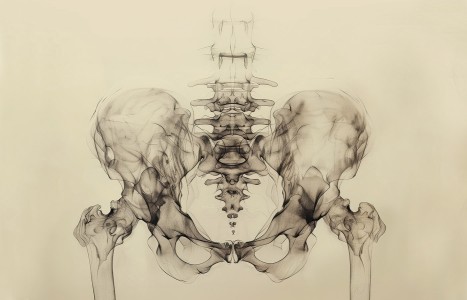People today want convenience, whether it be from their bank, credit card, favorite retail store, or restaurant. They demand it from the companies who hold their loyalty, including their health care providers (you). They don’t want to call and possibly be put on hold, and they want to use an app or schedule an appointment on your website. Here are three reasons your practice can gain by switching to online appointment scheduling.
A CSI Approach to Pain - Part One
Most of us have been daunted by pain at some time in our careers - either personal pain or a client's unrelenting pain that defies all of our creative and intuitive diagnostic and treatment procedures.
In Asian medicine, those of us who are avid readers of detective stories and murder mysteries, track clues in teamwork with our clients to pinpoint the source of the pain and an appropriate treatment/or exercise procedure as a contrast to the modern obsession with prescribed or over-the-counter painkillers and any possible hint of addiction.
I'm working with a client I'll call "Melinda" who experienced painful frozen shoulders, prompted I'm sure, by the uncomfortable positions she was obliged to hold while receiving post-mastectomy radiation - although her oncologist denied there was any connection. Those of us who are bodyworkers always visualize any fixed position or RSI or distorted body movement casting a beam through our prismic approach to pain.
As I had worked on Melinda post-mastectomy months ago, and taught her my qi-inspired series of exercises, I knew how comfortably and fluidly she moved before the radiation treatments.
One physical therapist told her it would take "six months" to correct the frozen shoulder problem. I balked at that sweeping generalization, the more so because it disheartened and dismayed Melinda emotionally. She didn't need that. More diplomatic by far would have been a general comment about frozen shoulders taking time, care and patience, but that each case was unique.
Alas Melinda also had an unfortunate experience with one very busy acupuncturist. He needled her and left her in a cold room in a fixed position that caused physical distress because of the vulnerability of her upper body. She lay there and wept. Being a breast cancer survivor myself, I fully empathized with her reaction.
Opting for Different Meridians and Points
Some of my acupuncture colleagues have found success needling distal points for a frozen shoulder, including GB 34, ST 25 and St 36, depending on the diagnosis. Being a bodyworker, I found it helpful to apply subtle pressure along Melinda's large intestine meridian with slow qi movements, with holding emphasis on LI 4, 10, 11, 15. Other helpful and releasing points included GB 20, 21, and SI 11.
Depending on diagnostic observations, body language, and the source of the problem, I have used very different meridian and point combinations for other clients with frozen shoulders. With another client, I found it even more helpful to mobilize distal joints (mainly hips, knees and ankles) to send positive messages to the shoulders through the joints' social networking systems.
Another View
Richard Kowal DC, my New York City chiropractor friend and colleague also emphasizes the importance of incorporating movement in any treatment procedure for frozen shoulders. "Adhesive capsulitis means that the humeral head is adhering to some part of the joint capsule, or socket," Kowal said.
"There is almost always an underlying component of rotator cuff strain/tear. The rotator cuff muscles (supraspinatus, infraspinatus and subscapularis - though typically not teres minor) - are not so much shoulder/arm movers as they are stabilizers of the shoulder through movement," Kowal explained.
"They keep the ball down in the socket as the shoulder moves. When the cuff muscles are weakened, the ball begins to rise in the socket with movement which is what causes the impingement of tissues in the capsule that underlies frozen shoulder syndrome."
Kowal advised that therapy to the tissue has to take place while the arm is moving through different ROMs.
Beyond "technique," I say it's vital to be reassuring and supportive while working with clients experiencing frozen shoulders, to ease the fear of immobility and stress that intensify pain.
I improvised some subtle qi movements to blend with Melinda's specific needs, encouraging her to repeat these as many times as possible during the day.
Melinda had a counterproductive tendency to hunch her shoulders and force exercises by elevating her arms while holding her breath, apprehensive of deepening the pain.
So, I advised her to sit in a relaxed position, do some deep and calming breathing exercises, avoid force, and concentrate on slow, soft qi circles, allowing arm movements to come primarily from elbows and wrists as a way of coaxing and freeing her shoulder joints.
As Melinda found it difficult to brush her hair, I showed her how to simplify the task by propping her elbows on a table to give her hands direct and immediate access to her head.
Not Rocket Science
None of this is rocket science.
It hastens recovery to help a client achieve simple everyday tasks that have become daunting because of frozen shoulders and debilitating pain.
I know this from my own agonizing experiences of shoulder injuries caused by cycling accidents. As often as possible during the day (even in lines at the post office or waiting for a bus) I would allow my arms to "float" in qi movements as though coaxed by a lovely breeze. No, onlookers didn't call me crazy, in fact some joined in!
Frequent repetition enhanced ROM and maximized my regular needling and ABT treatments. I sought comfy sleeping positions surrounded by a number of soft pillows.
That prompted me to incorporate all sorts of supportive, colorful cushions to enable my clients with shoulder (or any other) injuries to maximize comfortable treatment positions for themselves.
It's inspiring when a combination of a CSI zeal, procedures and dialog help us lead a client into a deeper insight into both source and solution. Teamwork is the key.
Resistance
But what if the client resists?
What if pain provides a crutch, an avoidance excuse - and your wise efforts to alleviate pain result in canceled appointments and a client you never see again, as was my experience with a certain client of some years ago? Let go gracefully, I say. Just hope a few seeds were sown in the client's consciousness that could take time to root, perhaps in someone else's therapeutic garden.
Complex forms of pain prod us to think outside of the box, to be creative. To listen to a patient with fresh ears and an open mind. To avoid making instant assumptions that often result in fatal errors.
Like the tragic case of a guy who sought help for shoulder pain and then then resisted the full gamut of conventional and alternative treatments for months until a concerned physician sent him for further tests and X-Rays.
They discovered he was terminally ill with advanced lung cancer.
Part two in this series will explore trauma and pain.


